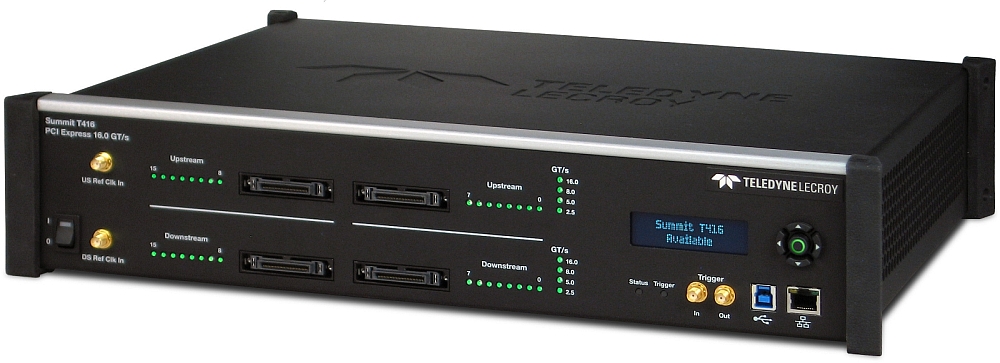- Teledyne LeCroy announced at the 2019 edition of the PCI-SIG Developers Conference that its protocol analyzers now support the 5.0 specifications of the PCI Express bus (PCIe).
- The Summit family of PCIe protocol analyzers can support PCIe 4.0 or PCIe 5.0 specifications.
The PCIe 5.0 specifications were unveiled in May by PCI-SIG, the consortium responsible for standardizing and upgrading the PCI bus. The data rate of the PCIe 5.0 bus is doubled compared to PCIe 4.0. It can reach 32 GT/s, which represents 4 GB/sec for a PCIe x1 slot, and up to 64 GB/s for PCIe x16 in unidirectional mode.
“Teledyne LeCroy protocol analyzers have been at the forefront of PCIe development since its inception, and our tools have played an important role in validating the new PCIe 5.0 specification,” said Joe Mendolia, Vice President of Marketing, Protocol Solutions Group, Teledyne LeCroy. “As a result, we are the first to market test equipment that allows companies to develop products using the new high-speed specification.”
The PCIe 5.0 bus transfer speeds are designed to meet the expectations of new generations of computing, transmission and storage equipment used by high-performance computing, cloud computing and artificial intelligence applications. By doubling the data rates previously available, PCIe 5.0 will allow the development of computer systems that meet these needs.
The Summit M5x protocol analyzer presented at the 2018 edition of the PCI SIG DevCon natively supports PCIe 4.0. Now it also supports PCIe 5.0 through an upgrade via a software license.
The Summit T54 protocol analyzer supports PCIe 5.0 technology at speeds up to 32GT/s and up to 4 of the x4 link widths. It also provides up to 64GB of recording memory that can be extended to support up to 128GB with up to x8 link widths by cascading a second analyzer. The Summit T54 can be controlled by USB or can be networked and controlled remotely via a 1000baseT Ethernet connection. It can also be synchronized with other high-speed protocol analyzers or Teledyne LeCroy oscilloscopes.






